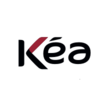Summary of our market study
The global condom market, estimated at $8.7 billion by 2020, is experiencing substantial growth, driven especially by increased demand from Asian countries. Spain, however, shows a divergent trend with a notable decline in condom use, especially among the younger generations, resulting in a 30% drop in consumption. The Spanish market is largely dominated by two major brands, Durex and Control, with innovative product variations, such as ribbed and extra-thin condoms, that enhance the sexual experience. Despite this, the country has seen a significant increase in sexually transmitted diseases. In terms of trade, Spanish condom imports increased by almost 50%, with a strong dependence on condoms from Thailand, China and Malaysia.
The COVID-19 pandemic spurred an increase in sexual activity: specifically in Spain, condom sales grew by 99% from January to April 2020, the highest in Europe. However, disruptions such as the temporary closure of Malaysian manufacturer Karex hinted at a potential global supply shortage. With market dynamics influenced by several factors, including public health initiatives and evolving consumer preferences, the condom industry continues to navigate through a mix of growth opportunities and challenges.
Trends in the Spanish condom market
In the recent past, Spain has experienced notable trends within its condom market, largely characterized by consumption dynamics among different demographic groups and the impact of health campaigns and government initiatives. The male condom remains highly prevalent, dominating nearly 60% of the contraceptive market. Despite its significant uptake, a decline in condom use has been observed over the years, largely attributed to the changing attitudes of younger generations towards contraception and protection. In particular, in the Spanish market there was a 30% drop in condom use, from between 15 and 20 million condoms used to approximately 10 to 15 million a decade later.
This change has an impact on understanding the consumption behavior of different age groups, with those under 25 years of age showing decreasing rates of use. In contrast, older demographic groups use alternative contraceptive methods or none at all. Parallel to this decline in condom use is the alarming increase in sexually transmitted diseases, which rose by a staggering 40%. Interestingly, within this decline, online retail has grown, highlighting the shift in shopping habits towards digital platforms. Despite these changes, the Spanish market is still dominated primarily by two brands, Durex and Control, which together accounted for virtually all of the market share in previous years. The economic implications are also significant, as the valuation of the Spanish condom market experienced a decline in line with the reduction in usage, falling from an estimated value of between €95 million and €100 million to between €70 million and €75 million. Furthermore, import-export dynamics shed light on Spain's dependence on Asian countries for condom production, importing predominantly from Thailand, China and Malaysia. Despite the overall decline in traditional retail trade, the Spanish condom market was not fully protected from pandemic-induced trends. During the initial Covid-19 closures, Spain experienced a dramatic rebound in condom sales, suggesting the existence of nuanced consumption patterns in times of health crisis.
In summary, the Spanish condom market presents a complex picture, intertwined with social values, health awareness, economic factors and evolving consumer behaviors. The overall decline in popularity among young people, coupled with the continued prominence of leading brands, frames the current state of the Spanish condom market.
Key Players Shaping the Condom Market Landscape
The condom market, while offering a wide range of contraceptive and STI protection products, is dominated by two major brands, Durex and Control. These two companies have established themselves as market leaders and have won a significant share of consumer preferences and loyalty thanks to their wide range of products and their strategic positioning in the market.
- Durex: synonymous with reliability and innovation
Durex, owned by Reckitt Benckiser, is not only a leading name in the Spanish market, but is also recognized worldwide as synonymous with high-quality condoms. With a history dating back to 1915, Durex has grown from a small London company to a brand that today is synonymous with safe sex and innovation. The brand has always been at the forefront of product development, offering a variety of condoms that meet different consumer needs, from ultra-thin condoms to flavored condoms. Durex's emphasis on research and development has enabled it to introduce products that enhance the sexual experience without compromising safety, making it the brand of choice for consumers around the world.
- Control - Mastering the Art of Consumer Satisfaction
Artsana Group's Control is another heavyweight in the Spanish condom market. Although it lags behind Durex in terms of market share, the brand has carved out an important niche for itself. Control has been able to win over consumers with its commitment to quality and a wide range of products that aim to enhance the intimacy of sexual experiences. From textured condoms that aim to enhance sensations to special lubricated variants that promise prolonged performance, Control has a specific range of products designed to meet the dynamic preferences of its customers.
Both Durex and Control have not only dominated the shelves of pharmacies and supermarkets, but have also carved out a dominant presence on the Internet, further consolidating their positions as market leaders. Thanks to their broad product ranges and consistent brand messaging, these companies have managed to remain relevant and desirable, addressing the needs and concerns of a diverse consumer base. As the market continues to grow and evolve, the dominant position of Durex and Control is a testament to their ability to adapt and innovate in an industry closely tied to changing public attitudes toward sexual health and pleasure. Thanks to their commitment to quality, safety and consumer satisfaction, these brands remain firmly at the forefront of the condom industry.
to understand this market
Detailed content of our market study
 Inforamtion
Inforamtion
- Number of pages : 35 pages
- Format : Digital and PDF versions
- Last update :
 Summary and extracts
Summary and extracts
1 Market overview
1.1 Definition and scope of the study
The condom is a product that is usually made of latex and is used as a means of contraception and protection against sexually transmitted diseases. Although the condom market represents both male and female versions of the product, it is important to note that the female condom is very underrepresented in the market and, therefore, this study will focus primarily on the male condom.In Spain, the male condom accounted for almost 60% of the contraceptive market in 2016 . [IPMark]
The global condom market is growing and is expected to continue to do so in the coming years. However, this dynamism must be relativized depending on the region. The Chinese market, for example, has strong growth potential compared to the more mature European and American markets. The global condom market is estimated at US$8.7 billion in 2020.
In Spain, however, the trend is different. Although the country remains one of the largest consumers of condoms globally, consumption has been declining over the years, with a30% decrease in the number of condoms used in the country between 2009 and 2019. This decline in condom use (predominantly by the younger generations) explains the dramatic increase in the number of sexually transmitted diseases recorded in the country over the same period of time.
The Spanish condom market is heavily dominated by two main brands, Durex and Control. Over the years, the players in the sector have considerably expanded their product range to go beyond the function of contraception or protection, and now offer numerous products to enhance the sexual experience. Therefore, innovation plays a key role , and thehe range of condoms on offer is becoming ever wider. Among the wide range of condom types offered, there are ribbed condoms, condoms with micro-pearls, condoms with thermal effect or extra-thin condoms, to name a few.
Although condoms are still mostly distributed by supermarkets and pharmacies, the role of online retailers (namely Amazon) has been steadily increasing over the years.
Finally, it is important to note that condoms remain a very specific product because they are linked to the healthcare sector. For example, in 2019, the Spanish Ministry of Health announced the launch of a study on free condoms as part of a plan to combat HIV. The impact of public bodies is therefore an element that could profoundly change the organization of this market.
1.2 A growing global market
Between **** and ****, the global condom market shows steady growth. In ****, its value was US$*.** billion, but this figure is expected to increase every year. In ****, the market should reach $*.** billion, then $*.** billion in ****, and so on, reaching $**.** billion in ****. This represents a compound annual growth rate (***) of **.*% between **** and ****. This evolution reflects growing demand and sustained interest in sexual health and protection products globally, driven by awareness campaigns and increased understanding of their importance.
Evolution of the global condom market World, ****-****, $ billions Source: ****
in ****, the ** largest condom exporters in the world present significant figures. Thailand tops the list with exports valued at $***.** million, followed by India with $**.** million and Malaysia with $**.** million. China ranks fourth with **.** million, followed by Japan with **.** million. In Europe, Germany stands out with **.** million, followed by Hungary with **.** million, the United States with **.** million, Poland with **.** million, and Spain closes the top ** with **.** million. These countries dominate the world condom export market, satisfying a constantly growing global demand.
Top ** largest condom exporters in the world World, ****, $ millions Source : UN comtrade in ****, the top ** condom importers in the world included both Asian countries and nations from other continents. China topped the list with imports valued at ...
1.3 The Spanish market
Between **** and ****, condom use in Spain declined before regaining popularity from **** to ****. This resurgence in condom use following the COVID-** pandemic is due in part to increased awareness of the importance of health and prevention in sexual relations. However, the decline in the active and sexually active population in the country negatively affects this market, as fewer people in these age groups reduces the overall demand for condoms in Spain.
In ****, the total population of Spain was **.** million people, of which **.**%(***)[***].
Furthermore, in ****, approximately **% of sexually active people in Spain used condoms[***].
To calculate the number of people who used condoms in Spain, the formula is used:
Sexually active population × percentage of condom use = **.** million × **% = **.** million people in ****.
This gives an average of **.* condoms per person per year (***).
Average number of condoms per user:
Total condoms / users = *** million / **.** million = **.* condoms per person.
In ****, the percentage of condom use in the sexually active population decreased to **%[***]. With this information, it is estimated that about **.** million people used condoms in Spain in ****. Maintaining the average consumption of **.* condoms per person, the total number of condoms consumed in **** was approximately ***.* million, **% less than ten years earlier.
Finally, the value of the condom market in ...
1.4 Imports and exports
The condom trade balance in Spain between **** and **** shows a number of significant fluctuations. In ****, the trade deficit was -*.** million USD. In ****, the balance worsened, reaching a deficit of -**.** million USD, representing a **.**% increase in the deficit over the previous year. However, in ****, there was a recovery with a reduction in the deficit to -*.** million USD, an improvement of **.**%. In ****, the deficit increased considerably again, reaching -**.** million USD, an increase of **.**% compared to ****. Finally, in ****, the deficit decreased again to -*.** million USD, a decrease of **.**%.
Condom trade balance Spain, ****-****, in millions of US dollars and in % Source: ****
In ****, condom imports in Spain came mainly from Asian countries, with Thailand as the main supplier, accounting for **.**% of imports. It was closely followed by China with **.**%, consolidating Asia as the dominant region in the supply of condoms to the Spanish market. Malaysia, another major condom producer, contributed *.**% of the total. In Europe, France and Germany also stood out as important sources, with *.**% and *.**%, respectively. Portugal(***) contributed to a lesser extent, while the rest of the world accounted for *.*% of imports. These data reflect Spain's strong dependence on the supply of condoms from Asia, particularly Thailand and China, ...
1.5 The impact of Covid-19
Due to restrictions imposed by the Spanish government to contain the spread of Covid-**, the country saw a significant increase in sexual activity among its population. In fact, Spain experienced a **% increase in the number of condoms sold between January and April ****. Compared to other European countries, Spain experienced the highest growth, with the UK in second place close behind (***).
Condom sales in Europe Europe, January **** - April ****, in % Source: ****
In addition, the Covid-** pandemic caused many countries to go into lockdown to contain the spread of the virus. Such was the case in Malaysia, home to the world's largest condom manufacturer, Karex. Karex, a company that reportedly produces * in * condoms worldwide, was forced to temporarily shut down the manufacturing plant. As a result, there was a risk of a shortage of *** million condoms worldwide. However, the company was allowed to continue producing condoms at **% capacity[***].
2 Demand analysis
2.1 The sexual life of Spaniards
In Spain, in ****, although Spaniards had an average of *.** sexual relations per month, the age of first intercourse showed significant variations between men and women. Thus, **.**% of men had had their first sexual intercourse before the age of **, while in the case of women this percentage rose to **.**%. The majority of both men(***) had their first sexual intercourse after the age of **.
Age of first sexual intercourse Spain, ****, %, %, by age of first sexual intercourse, **** Source: ****
In Spain, in ****, data on infidelity showed that **.**% of men and **.**% of women admitted to having been unfaithful at some point. On the other hand, the majority, i.e. **.**% of men and **.**% of women, said they had never been unfaithful.
have you ever been unfaithful? Spain, ****, %, % Source: ****
It was also observed that the use of condoms with a partner who was not stable showed significant differences between men and women. Some **.**% of men reported having used a condom in these situations, while **.**% admitted not having used one. In the case of women, **.**% reported having used a condom with a non-stable partner, compared to **.**% who reported not having done so. These data reflected a greater tendency to use condoms among women compared to men in situations of ...
2.2 Who uses condoms in Spain?
Regarding condom use in Spain in ****, **.*% of the population stated that they do use it regularly. However, **.*% indicated that sometimes they do not use it, which reflects a certain inconsistency in its use. On the other hand, *.*% responded that they do not know whether or not they use it on all occasions. Condom use in Spain Spain, ****, %, %, %, ****, Spain, ****, %, % Source: ****
Between **** and ****, condom use in Spain has undergone remarkable changes. In ****, **.* % of the population claimed to always use it, but this percentage decreased considerably over the years, reaching **.* % in ****. In contrast, the proportion of people who indicated that they sometimes do not use it has increased, from **.* % in **** to **.* % in ****. In addition, those who responded "don't know" showed fluctuations, with a peak in ****(***) and a decrease to *.* % in ****. These data reflect a trend toward less consistent condom use, along with some variability in the perception of condom use over time.
Condom use in Spain Spain, ****-****, % Source: ****
In Spain, in ****, the most commonly used methods of contraception reflected a variety of preferences among the population. The condom is the most common method, used by **.* % of people. It is followed by the contraceptive pill, with ** %, while the hormonal IUD is used by * %. Vasectomy ...
2.3 Condoms: a necessity
STIs diagnosed in Spain Spain, ****, thousands of cases, % increase ****-**** Source: ****
In ****, sexually transmitted infections (***) in Spain showed a worrying increase in diagnosed cases of chlamydia, gonorrhea and syphilis compared to ****. Chlamydia registered **,*** cases, an increase of **.*%. Gonorrhea, on the other hand, reached **,*** cases, experiencing the highest increase with **.* %. Finally, syphilis cases totaled **,***, representing an increase of **.* %. These data reflect an upward trend in STIs in Spain, highlighting the importance of strengthening prevention and awareness campaigns on sexual health.
That year, men in Spain were also more affected than women in the diagnosis of sexually transmitted infections (***), men accounted for the vast majority of cases, with **%, and in syphilis, **% of diagnoses also corresponded to men.
Men, more affected than women Spain, ****, % Source: Ondacera In addition, ** % of young Spaniards admitted not knowing the health status of the person with whom they have sex, while only ** % claimed to know it.
Young Spaniards who do not know the health status of the person they have sex with Spain, ****, % Source : Ondacero It was also **% of young Spaniards who said they would not have a sexual relationship with a person who has a sexually transmitted infection (***). However, that year, **% indicated that it would depend on the ...
3 Market structure
3.1 Value chain
Obtaining Raw Materials :
Natural or synthetic latex: Latex is the main raw material for condoms. It is obtained from the resin of rubber trees (***), mainly in countries such as Thailand, Malaysia and Indonesia. Other materials: For condoms made of polyurethane or other synthetic materials, petrochemical derivatives are used. Lubricants and additives : Lubricants, flavoring agents, colorants and other additives are added to enhance functionality and user experience.
Production and Manufacturing :
Latex Processing : Latex is treated and refined. To ensure quality and consistency, it is purified and stabilizers are added. Molding: Liquid latex is poured into molds that replicate the shape of the condom, a process that is performed in large batches. Drying and vulcanization: This process gives the condom its elasticity and durability. In the case of non-latex condoms, other manufacturing methods are used. Quality Testing: Each batch is checked for strength and consistency, often with electrical or inflation tests, to ensure that each condom meets safety standards.
Lubricant Application and Packaging :
Lubrication: Condoms are coated with different types of lubricants, depending on consumer preference (***). Packaging: Each condom is individually packaged to ensure its protection. They are then packed in boxes for easy transport and storage.
Distribution and Logistics :
Transportation: Condoms are ...
3.2 Production
Condom production worldwide is concentrated in Asia, mainly in countries such as Malaysia, Thailand, China and India, due to the availability of natural latex and lower production costs. Major international brands, such as Durex and Control, which once manufactured in Spain, moved their operations to these countries to reduce costs. Durex had a production plant in Rubí until ****, while Control ceased manufacturing in Alcorcón in ****.
However, in recent years, an alternative has emerged for those seeking "made in Spain" condoms. The Actual brand, created by the company CEX Internacional and based in the province of Barcelona, has begun manufacturing condoms in Spain. Actual offers a full range of products of different types to suit the needs of consumers: from classic condoms to sensitive, ribbed and retardant options. These products are available in packs of up to *** units, and are competitively priced at around ** euros per pack, which is close to the price of condoms manufactured in Asia, which tend to be cheaper. This effort by CEX Internacional not only brings condom production back to Spain, but also responds to a growing demand for locally sourced products.
In addition to Actual, CEX Internacional also produces the Family brand, another example of ...
3.3 A globally concentrated market
The world condom market is highly concentrated, dominated by a few multinational companies that account for the lion's share of global sales. Leading brands such as Reckitt Benckiser's Durex and Karex Berhad, the world's largest producer, control a large share of the market thanks to their mass production in Asian countries such as Malaysia, Thailand and China, where manufacturing costs are lower and access to natural latex is easier. This concentration allows these companies to invest in innovation, marketing campaigns and product diversification, offering not only condoms of different styles and materials, but also complementary sexual wellness products. However, this concentrated market structure also means that smaller players and new brands face significant challenges to compete and expand their presence, given the weight and consolidation of these large companies.
The following table presents these major players in the condom market:
Source: ****
In ****, Durex was the most widely used condom brand in the world with * billion sales every year. The brand had an estimated global market share of **%.
Durex market shares worldwide World, ****, % Source: ****
3.4 Distribution
In Spain, condoms are distributed through several main channels that seek to satisfy different consumer needs and preferences:
Pharmacies and parapharmacies: This is the most traditional and reliable distribution channel for condom sales. In pharmacies, consumers can find the leading brands in the market, such as Durex and Control, which offer a wide range of products. In addition, specialized condoms, such as latex-free products designed for people with allergies, can be found in these stores. This channel provides a safe and counseled environment, ideal for those seeking specific product recommendations. Supermarkets and large chains: Large chains such as Mercadona have introduced their own brands of condoms, such as ON, characterized by their excellent value for money. This channel makes condoms available in an accessible and economical way, adapting to the mass market. By being located in supermarkets, consumers can add these products to their regular shopping, facilitating discreet and convenient purchasing. E-commerce: With the rise of online shopping, platforms such as Amazon and specialized online stores have gained popularity for the purchase of condoms. Through these channels, consumers can shop discreetly and access a wide variety of products, including condoms with specific features, such as extra-thin or textured condoms. This channel ...
4 Offer analysis
4.1 Product description
In Spain a wide variety of condoms are offered, varying by size, thickness, texture and flavor among others. These are the most popular types of condoms sold in Spain[***]:
Classic condoms - This is the most popular type of condom. They are transparent, thin and lubricated XL condoms - They are similar to the classic condoms, only they are longer and wider Ultra-thin condoms - **% thinner than classic condoms Extra-strong condoms - These are safer because they have undergone some resistance tests before being marketed to the public Extra lubricated condoms - These are condoms with an extra amount of lubrication (***) Delayed condoms - These condoms contain benzocaine, a special lubricant that delays ejaculation Ribbed condoms - These condoms have bumps and ridges that, in theory, enhance a woman's sexual experience Spermicidal condoms - Condoms with spermicides offer additional protection against unwanted pregnancy Flavored condoms - These are condoms with particular flavors and smells. Fruit flavors are the most common Colored condoms - These are condoms that take on several different colors Ice and fire condoms - These condoms are supposed to provide exciting sensations to increase pleasure during sexual intercourse Easy Way" condoms - These are condoms that are very ...
4.2 Prices
The following tables present the supply of condoms in Spain in **** for some distribution channels:
Mercadona :
Source: ****
To the field:
Source: ****
Top ** Amazon :
Source: ****
Offer Pharmaceuticals :
Source: ****
Thus, it can be seen that the Durex brand is more expensive on average than Control and Family.
Average price of condoms according to brand Spain, ****, euros Source: ****
Also, condoms sold in famacías and Mercadona appear cheaper than those sold in Amazon or Alcampo.
Average price of condoms by distribution channel Spain, ****, €. Source: ****
5 Regulation
5.1 Regulation
At the international level, condoms, as medical devices, must comply with the ISO standards iSO standards. This framework includes standards relating to the quality of materials, products, processes and services published by the International Organization for Standardization. The following is a non-exhaustive summary of what this particular framework covers:
ISO **** the ISO standard provides all the requirements and tests that a latex condom must meet and pass. This standard exists to ensure the safety of users of condoms that have this ISO standard. The ISO **** standard has been transposed into Spanish and European legislation, so it can be found under the quality assurance label "CE"; ISO ***** the standard establishes all the requirements and tests for condoms manufactured with synthetic materials; ISO *****:**** the standard deals with the quality conditions for female condoms; The ES O ***** is a standard for companies producing medical devices. It is not mandatory, but serves as a quality guarantee for customers who buy their products.
All these standards are issued by ISO/TC ***, which is the ISO technical committee on "Non-systemic contraceptives and barrier prophylaxis against STIs," dealing with male and female condoms.
Because of the importance of this organization's work from a health perspective, many international organizations ...
6 Positioning of players
6.1 Segmentation
- Control (Gruppo Artsana)
- Mercadona
- Carrefour
- Mifarma
- CondonZ
- Reckitt España
All our studies are available online in PDF format
Take a look at an example of our research on another market!
 Choosing this study means :
Choosing this study means :
Access to more than 35 hours of work
Our studies are the result of over 35 hours of research and analysis. Using our studies allows you to devote more time and added value to your projects.
Benefit from 6 years' experience and over 1,500 industry reports already produced
Our expertise enables us to produce comprehensive studies in all sectors, including niche and emerging markets.
Our know-how and methodology enable us to produce reports that offer unique value for money.
Access to several thousand articles and paid-for data
Businesscoot has access to all the paid economic press as well as exclusive databases to carry out its market research (over 30,000 articles and private sources).
To enhance our research, our analysts also use web indicators (semrush, trends, etc.) to identify market trends and company strategies. (Consult our paying sources)
Guaranteed support after your purchase
A team dedicated to after-sales service, to guarantee you a high level of satisfaction. +44 238 097 0676
A digital format designed for our users
Not only do you have access to a PDF, but also to a digital version designed for our customers. This version gives you access to sources, data in Excel format and graphics. The content of the study can therefore be easily retrieved and adapted for your specific needs.
 Our offers :
Our offers :
the condom market | Spain
- What are the figures on the size and growth of the market?
- What is driving the growth of the market and its evolution?
- What is the positioning of companies in the value chain?
- Data from several dozen databases
5 reports pack (-15%) ES Spain
- 5 reports at €75.6 excluding VAT per study to choose from our Spanish catalogue for 12 months
- Save 15% on additional studies purchased
- Choose to be refunded any unused credit at the end of the 12-month period (duration of the pack)
See the terms and conditions of the pack and the refund of unused credit.


















